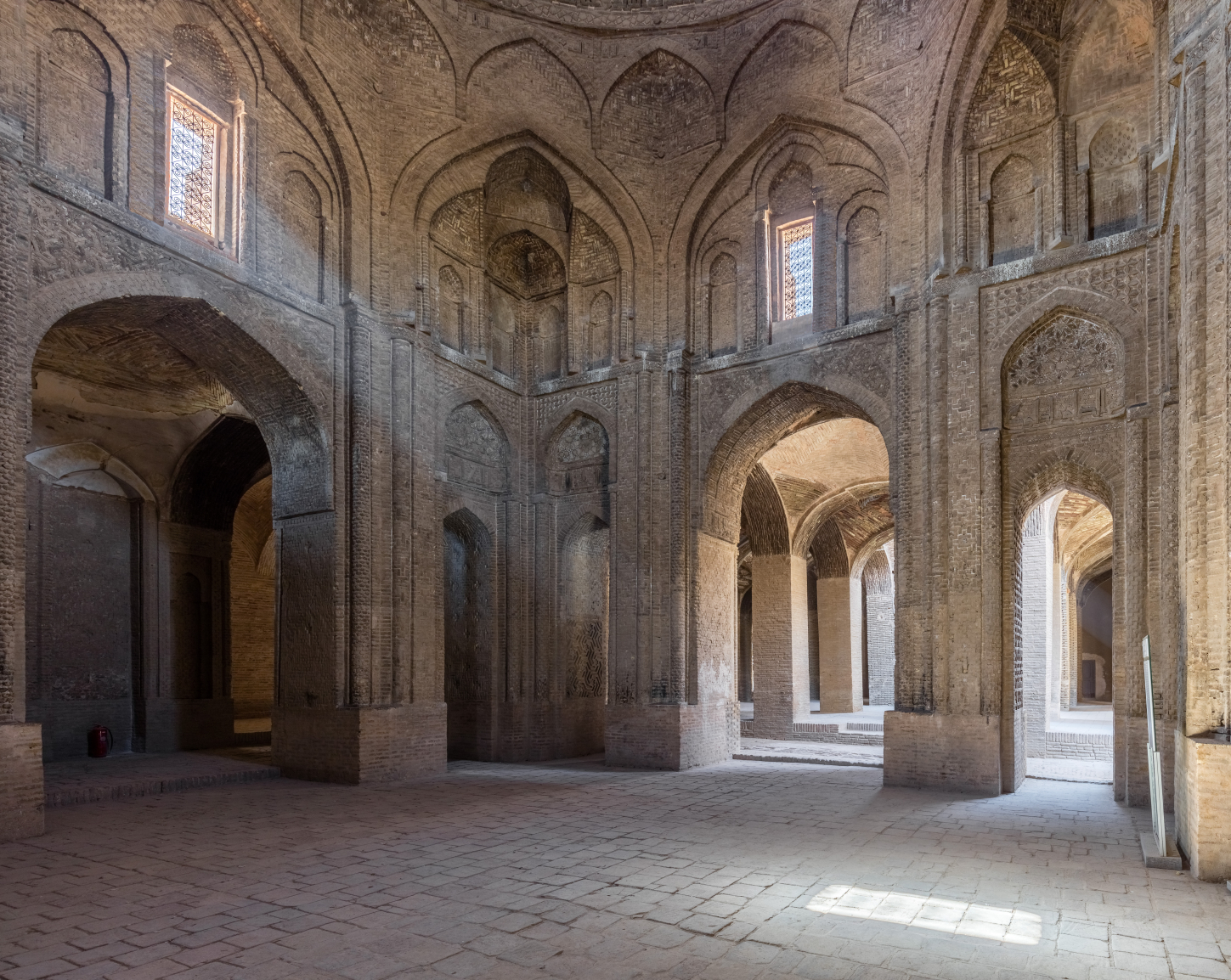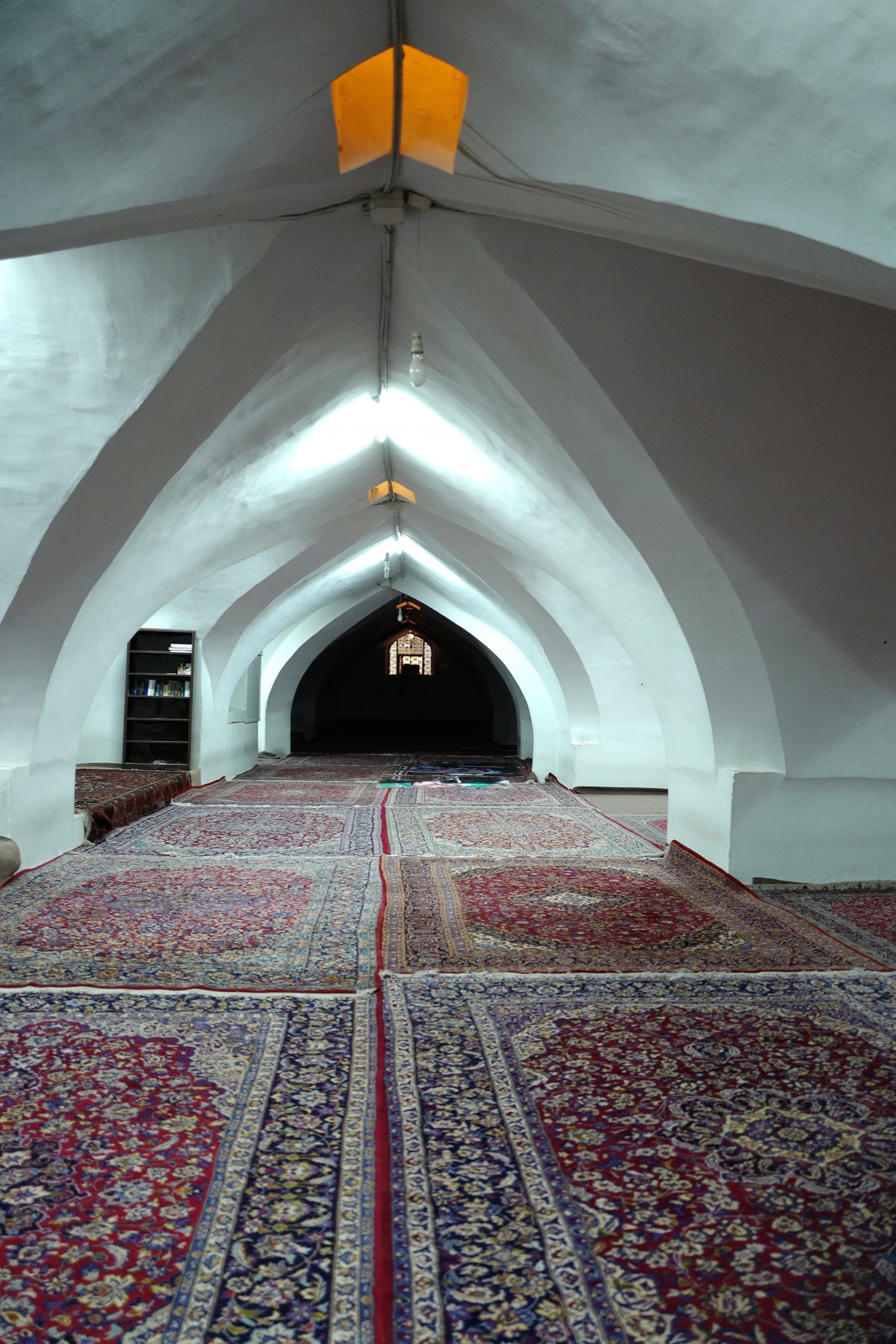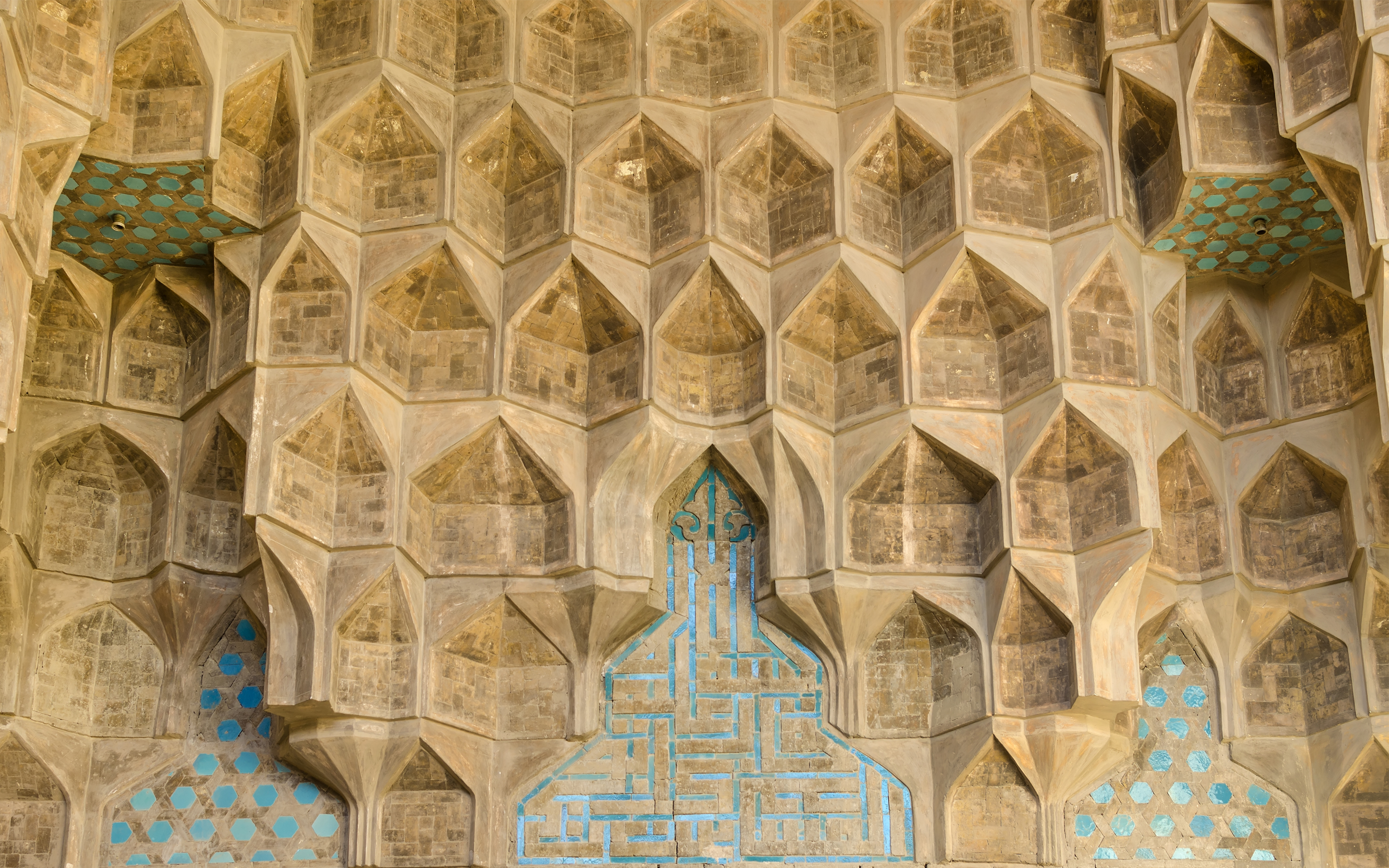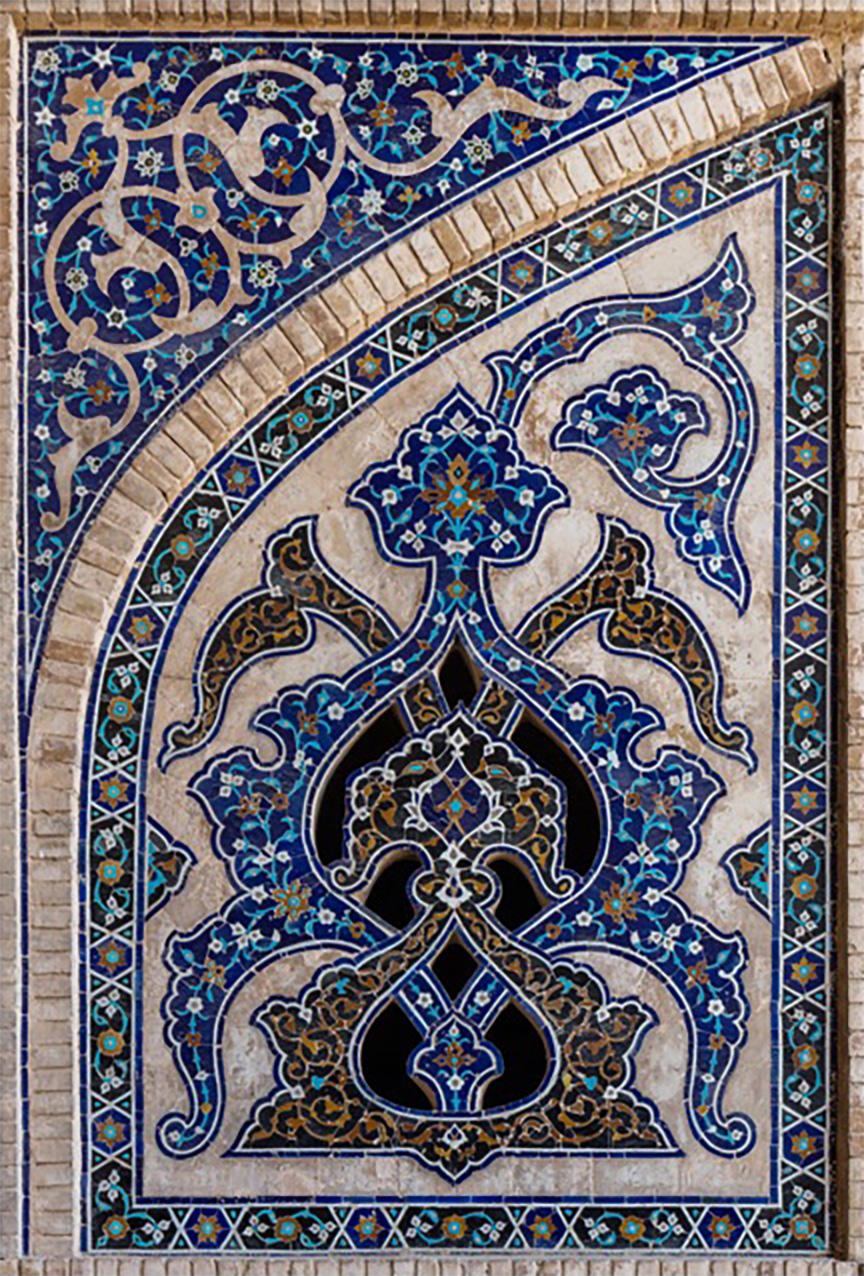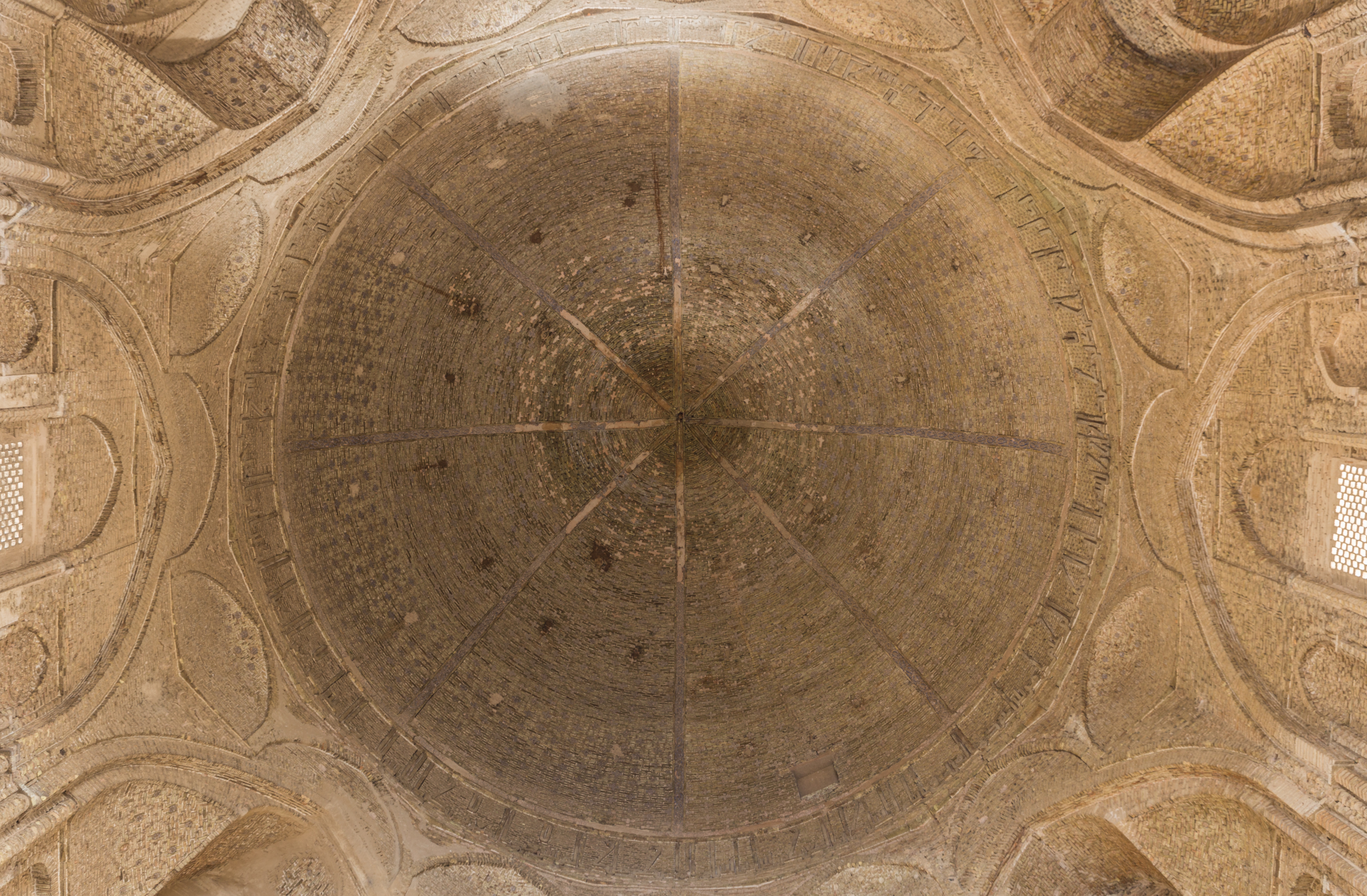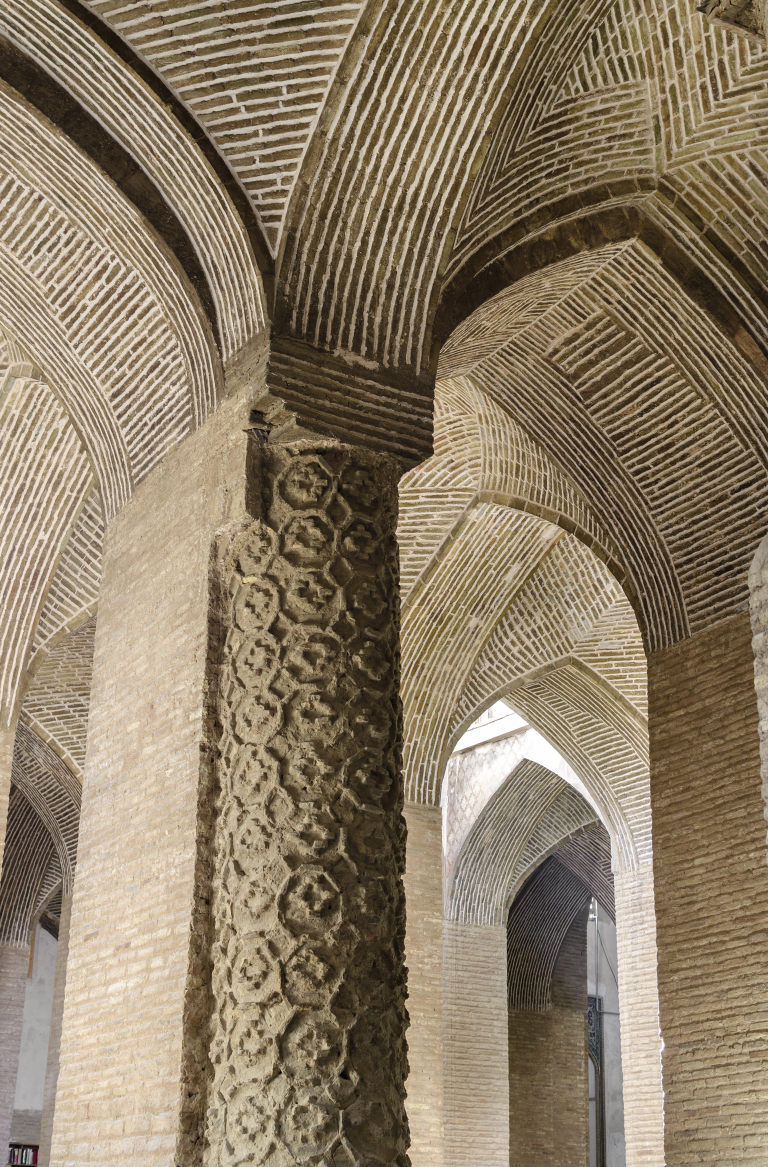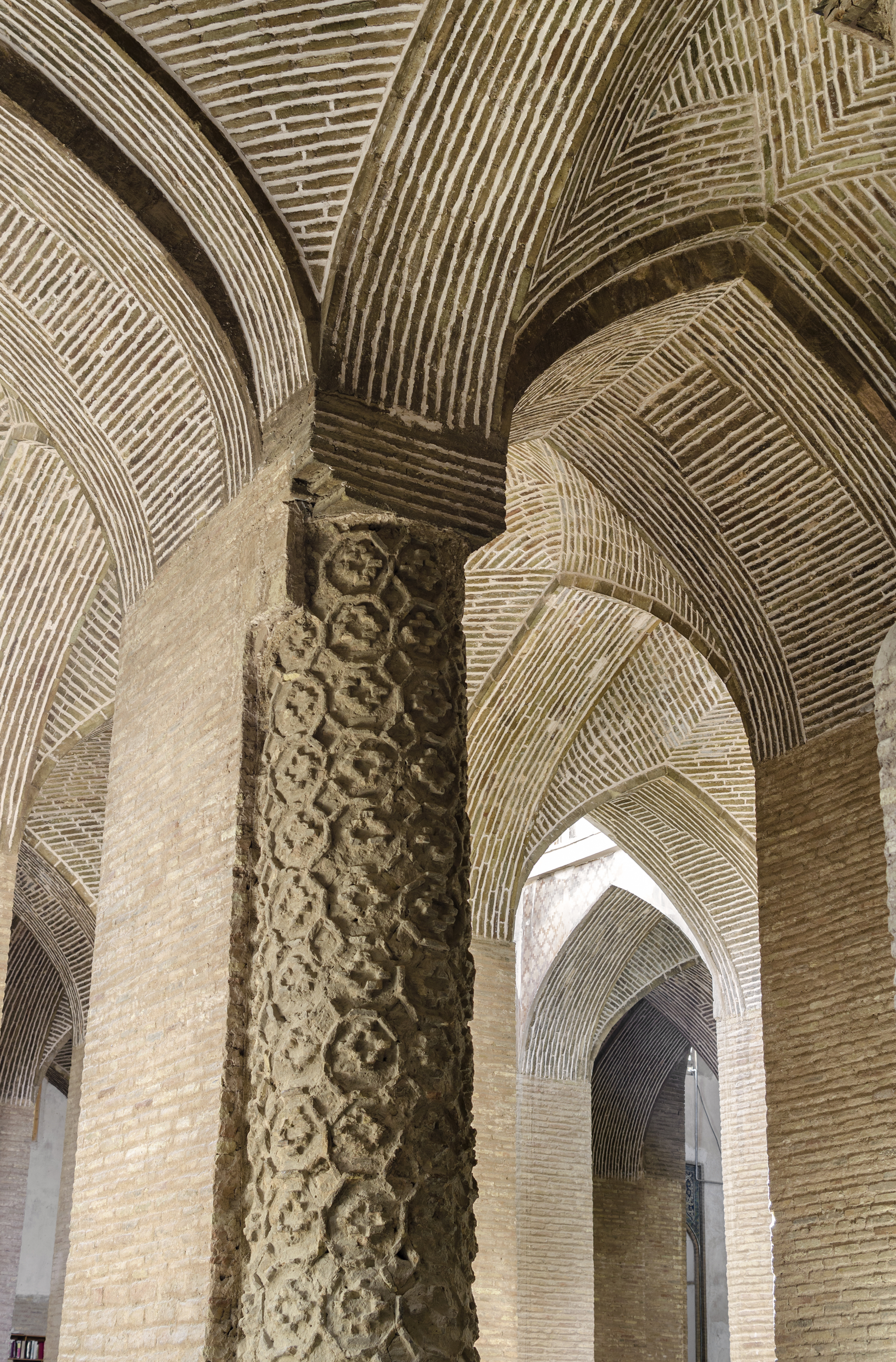On a spring day in 2012 during a visit to Isfahan, Iran, I had the remarkable sense as if I were strolling through a physical deposit of time. All readers of these words can likely recall such a feeling of being in an extraordinary place. It can happen in the face of remarkable natural or cultural beauty, in spaces that one knows to have witnessed something wonderful or horrible, and at sites that bear special significance for one’s life.
My psychosomatic reaction occurred during a visit to Isfahan’s ancient Friday mosque. This is a set of buildings that is a major attraction on the visitor circuit, a site of monumental scale that one experiences like a museum rather than a place of worship. It is divided into numerous halls and passages, constructed at various points between the end of the eleventh century and the present. Asymmetric expansions and uneven preservation and decay have given the building a tangled character.
As one walks through the building, the floor rises and drops, the ceiling changes shapes and heights, and pillars holding the ceiling grow fat or thin and become placed densely or sparsely within the enclosures. The walls switch between brick and plaster, their surfaces going from unremarkable dun to whitewash to brilliant stucco, mosaic, and tile decorations in varying styles. Observing these matters, I had the feeling of traversing back and forth through a time materialized.
The monument’s stolid structures seemed to have the capacity to absorb human lives, their permanence capturing the transience of beings like me into them. There was a sense of exhilaration and surprise as I perceived a physical encounter with the past rather than its usual indication in words and thought. The experience created a memory, a lasting mental imprint, which I share as I write these words.
How should I make sense of my reaction to the Friday mosque in Isfahan and the enduring feeling about it I still carry within me? This is a complex question that pertains to both the physical site and the way I am conditioned to understand time. The mosque has existed in Isfahan for centuries irrespective of my visit to it in 2012. Many people who see it in the way it is presented today are likely to comment on its grandeur and the physical differences observable in its various parts. The building confirms the reality of the past beyond mere observation by a person.
But to see the physical monument as a mirror for the passage of time as I have described above is an act of interpretation predicated on adopting a certain viewpoint on information about human inhabitation in Isfahan. My feeling that I was encountering the past physically reveals my horizon of time. Instances of apprehending, describing, sharing, or projecting value regarding the past such as my reactions depend on the observer’s position. These acts signify contextual understandings that vary greatly based on intellectual and sociocultural conditioning, principles pertaining to evidence and logical deduction, and the utility of documenting the past.
A stark juxtaposition can help highlight the point. My reaction to the mosque was so vivid that, initially, it was difficult for me imagine that other visitors to the site would not be affected by it similarly. My prior awareness of Isfahan’s past may have made me especially able to recognize details in the mosque’s remains. But such knowledge hardly seemed necessary to appreciate the complex’s overall status as a deposit of the past. A powerful reaction to the mosque as an object would appear to be obvious and natural. This, however, hardly turns out to be the case.
Surveying the voluminous literature on Isfahan before the twentieth century, I cannot locate references in which the mosque is described as the repository of the city’s historical trajectory. To be sure, the mosque is mentioned time and again, sometimes incidentally as the site of events and at other times through specific reference to patronage by persons in authority, with comments on its location, shape, destruction, refurbishment, and expansion. Yet, no report portrays it as a manifestation of time, the inside view of a temporal layer cake, its physical differences referencing various past eras that correlate to information from literary sources.
It seems extraordinary that the precise matter that appeared to me to be the mosque’s most remarkable aspect was unworthy of comment to writers whose lives I saw inscribed in it. For modern observers, the mosque looks like the stage for the drama of history. For us, the mosque is an object to be observed and preserved as an archival artifact. For those with different horizons, it was simply a prominent location within the inhabited environment where certain actions were customarily performed.
I should say emphatically that by contrasting the two different views of the mosque, I do not intend to suggest a hierarchy between them. Not commenting on the peculiarity of the mosque’s form is not more “authentic” than the modern perspective. I fully own my view of the encounter and would insist that it is as meaningful as the experience of persons living centuries ago. The relevant point here is that variance in perspective regarding understandings of time conditions us to apprehend the material world in distinctive terms. This variation ought to matter as a major issue for thinking about Islam as a historical subject. To create the richest and most complex understandings of Islamic pasts, we need both self-awareness regarding our presumptions about time and careful attention to alternatives that we should presume as being embedded within the sources we use for our reconstructions.
My reaction to the mosque stemmed from my understandings of history and Islam, which determined the way the site was meaningful to me. Both history and Islam mattered deeply to premodern observers of Isfahan who constructed and augmented the mosque over nearly a thousand years. But their senses of time proceeded from other presumptions, varied greatly between themselves, and led to hosts of different effects. Contrasting understandings and experiences of time—temporalities—reveal as much about modern perceptions as they do about inhabitants of Isfahan from centuries past.
The experience of visiting the mosque in Isfahan I have described has proven a kind of touchstone for the way I have come to think about time while writing this book. My reaction to the monument provides a striking example of the way expectations pertaining to time structure our vision and understanding before an encounter with physical reality. This book as a whole is an extended rumination on issues brought up by this encounter. It includes self-reflection as well as my attempts to substantiate ways of seeing the world other than my own.

